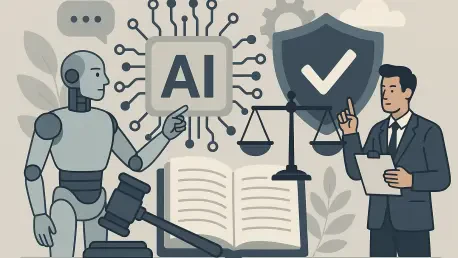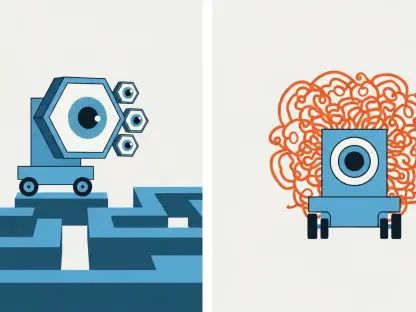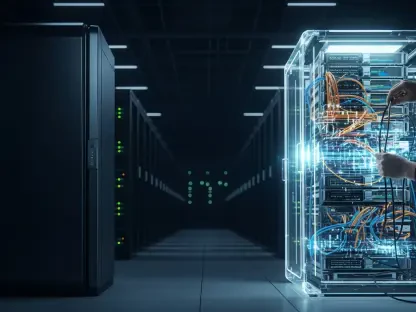In the intricate world of artificial intelligence development and regulation, Laurent Giraid stands out as a thought leader. As a seasoned technologist, his insights into machine learning, natural language processing, and the ethical implications of AI offer invaluable perspectives. Today, he delves into the urgent call for international regulation of tech giants, intellectual property reform, and workforce preparation amidst AI-driven changes.
Can you explain why international regulation of tech giants is crucial in the AI landscape?
International regulation of tech giants is pivotal because these companies hold immense influence over AI development globally. They possess resources that surpass many national governments, enabling them to drive innovation and set industry standards. Without cohesive international regulation, there’s a risk of unaligned policies that fail to address ethical concerns, privacy issues, and equitable benefits. We need a unified approach that ensures AI advances align with societal values and serve global interests rather than just corporate agendas.
What challenges do individual countries face in regulating tech companies, and how can international trade agreements help in addressing these issues?
Individual countries often struggle with resource limitations and enforcement capabilities when regulating major tech companies. These companies operate on a global scale, complicating jurisdictional authority. International trade agreements offer a solution by establishing standardized regulations that transcend national boundaries, creating a framework for accountability and cooperation. Such agreements can facilitate the sharing of best practices and innovations while holding tech companies accountable across borders.
How does the monopolization of AI development by large companies impact research priorities and public interest?
The monopolization skews research priorities towards commercial interests, often sidelining public benefit. When a few large companies dominate AI development, they emphasize profit-driven goals, such as optimizing advertising algorithms or personalizing consumer experiences. This focus can neglect critical areas like healthcare improvements or environmental sustainability that require attention and public investment. It limits diverse perspectives in AI research, thereby risking the potential of AI to address broader societal challenges.
Can you provide some examples of how commercial interests might overshadow public benefit in AI research?
One clear example is the prioritization of AI applications for targeted marketing over therapeutic AI tools that could revolutionize mental health care. While advances in consumer data analytics propel economic benefits for tech companies, we witness slower progress in AI-driven medical interventions that could provide immense societal benefits. This disparity often results from misaligned incentives and funding allocations, where profitability overshadows the potential for AI to contribute to public welfare.
What environmental problems arise from AI development, particularly concerning electricity usage and microchip manufacturing?
AI development is energy-intensive, with substantial electricity demands for training and operation, such as in large language models. Reports show staggering amounts of energy used, paralleled by the environmental impact of microchip manufacturing. This production involves toxic chemicals and vast water consumption, adding to pollution and resource depletion concerns. Addressing these issues requires sustainable practices and innovations aimed at reducing the carbon footprint of AI systems.
How does the production of microchips for AI systems contribute to environmental degradation?
Microchip production is a resource-heavy process involving complex chemicals and large quantities of water and electricity. Factories dedicated to chip manufacturing consume enormous energy, contributing significantly to carbon emissions. These environmental costs are exacerbated by waste and pollution from the production process, highlighting the urgent need for eco-friendly practices and materials in the industry.
Why is intellectual property reform needed, and how should companies handle copyrighted materials in AI training?
Intellectual property reform is crucial because AI systems often rely on vast amounts of copyrighted data for training, raising concerns about fair use and compensation. Companies must obtain permission from copyright holders before utilizing their work in algorithms. They should implement transparent practices, listing the materials used in their systems, thereby respecting intellectual property rights and fostering trust with creators.
What measures can be taken to ensure transparency when AI systems use copyrighted data?
Creating a robust framework for transparency involves documenting the datasets and training materials used by AI systems. This can be achieved through standardized reporting or open access registries, allowing creators to understand how their work contributes to AI advancements. Establishing clear consent processes and compensation models ensures ethical use of intellectual property while encouraging collaboration between tech companies and content creators.
In what ways do biases in AI decision-making affect sectors like healthcare, hiring, and financial services?
Biases in AI can lead to discriminatory practices across these sectors, affecting the quality and fairness of decision-making. In healthcare, biased algorithms might exclude certain demographics from receiving adequate care. In hiring, they can perpetuate workplace inequalities, limiting opportunities for diverse candidates. Similarly, biased financial models can lead to unequal access to loans or credit based on flawed assumptions. Addressing these biases is crucial for ensuring equity and trust in AI-driven decisions.
What policy-led solutions can address disinformation and hate speech online?
Policy initiatives must prioritize the balance between upholding free speech and protecting users from harmful content. Governments can implement regulations requiring platforms to actively monitor and remove disinformation and hate speech. This involves setting clear criteria for content moderation, enhancing platform accountability through regular audits, and promoting user education to recognize and report malicious content.
How do disinformation and deep fakes pose real threats in society?
Disinformation and deep fakes undermine societal trust by blurring the line between reality and deception. They erode public discourse, skew perceptions, and can incite violence or discrimination. As AI technology enhances the sophistication of such tools, the challenge lies in detecting and addressing these threats, ensuring information integrity, and sustaining democratic and social structures.
What might happen if we struggle to differentiate between fact and malicious fiction?
The inability to distinguish between truth and manufactured lies can lead to widespread confusion, destabilizing societal norms and trust. This chaos breeds misplaced doubt and conflict, potentially fracturing community cohesion. Facts serve as the foundation for informed decision-making, governance, and interpersonal relationships; protecting their integrity is vital to sustaining order and cooperation.
How can governments prepare for job displacement resulting from AI automation?
Governments must anticipate sector-specific disruptions by investing in reskilling programs and promoting continuous learning. Supporting transitions to new roles through education initiatives and creating safety nets for affected populations will be crucial. Encouraging entrepreneurship and innovation in emerging fields can also provide alternative paths for employment, leveraging AI as a tool for job creation rather than displacement.
Why is it important for public investment in services and alternative employment to address AI-related job disruption?
Public investment is essential to mitigate social disruption and enable economic resilience. It ensures equitable access to resources that aid workforce adaptation, supporting those impacted by AI-driven changes. By fostering robust service sectors and promoting alternative employment opportunities, such investment aids in redistributing wealth and expertise, ultimately contributing to societal stability and growth.
Could you give a brief overview of the history and current systems of AI as discussed in your book “Understanding the Artificial Intelligence Revolution”?
The book traces AI’s evolution from early attempts at mimicking human thought to today’s complex algorithms transforming industries. It highlights key milestones, technological advancements, and societal impacts, offering a comprehensive look at AI’s trajectory. Present systems focus on deep learning and natural language processing, confronting challenges like ethical dilemmas and the need for regulatory frameworks. The book serves as a guide to both enthusiasts and policymakers navigating AI’s rapidly advancing landscape.









